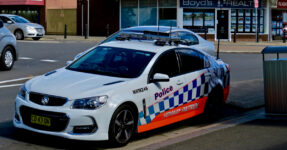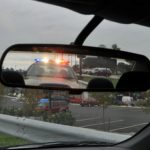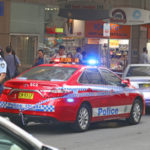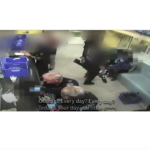Are Police Officers Required to Follow the Road Rules?

A Victorian police officer is facing up to ten years in prison after being charged with speeding and reckless driving offences.
47-year old Leading Senior Constable Brad Beecroft was charged after he allegedly travelled up to 230km/h to reach a fellow officer who was bruised after being struck by a car on the side of the freeway last year.
The officer activated the police vehicle’s lights and sirens along with his in-car camera before speeding for nine kilometres to reach the injured officer. He allegedly passed 77 vehicles on the freeway and reached a top speed of 230 kilometres per hour to reach his colleague, who spent a night in hospital.
A Victorian Court heard the senior officer had a passenger and a fellow police officer in the car, and that he holds a ‘gold class’ driver licence.
He has pleaded not guilty and is defending the charges.
Road rules and police double-standards
While there are a number of rules that road users must abide by when they encounter an emergency vehicle on the road, the road rules for emergency vehicles (Police, Firefighters and Ambulances) in the line of duty are not crystal clear in New South Wales.
A few years ago, a photograph of a female police officer talking on a mobile phone while driving was shared to social media. The post went viral with a lot of anger from ordinary citizens who would be fined and lose demerits points for doing the same thing.
At the time, the NSW Police Force issued a statement that while it could not comment on the specific incident, police officers are exempt from some road rules in the line of duty.
Exemption contained in the Road Rule
Regulation 305 of the Road Rules 2014 (NSW) provides that the rules do not apply to an authorised driver of a police vehicle if:
- The driver is taking reasonable care,
- It is reasonable that the provision should not apply, and
- In the event that the vehicle is a motor vehicle that is moving, the vehicle is displaying a blue or red flashing light or sounding an alarm.
The requirement for a moving vehicle to display a flashing light or sound an alarm does not apply if it is reasonable:
- Not to display the light or sound the alarm, or
- For the vehicle not to be fitted or equipped with a blue or red flashing light or an alarm.
A similar clause applies in Victoria, as well as in other states and territories across Australia.
There has been a lot of criticism over the breadth of these exemptions, which many believe enables officers in practical terms to drive as they please – potentially placing members of the public in danger.
Police pursuits
The NSW Police Force often makes reference to its “Safe Driver Policy”, asserting that officers are regularly trained and assessed in terms of their driving skills and knowledge of applicable protocols.
But the policy is shrouded in secrecy, and there have been calls for greater transparency after the death of 16-year old Jai Wright whose trail bike was hit by an unmarked police vehicle during a chase in Sydney in February 2021. His parents are calling for an inquest into his death.
There have also been calls for many years for a prohibition on high speed police pursuits, due to the dangers these pose on members of the public. Every year in Australia, members of the public are killed during these pursuits including drivers involved, passengers and members of the public.
Victoria has banned high speed police pursuits unless there is a serious risk to public safety or a crime has been committed which involved a serious injury.
There is no such prohibition in New South Wales.
Going to court for a traffic offence?
If you are going to court for a traffic offence, call or email Sydney Criminal Lawyers anytime to arrange a free first consultation with an experienced, specialist traffic lawyer who will accurately advise you of your options, the best way forward, and fight for the optimal outcome in your specific situation.







